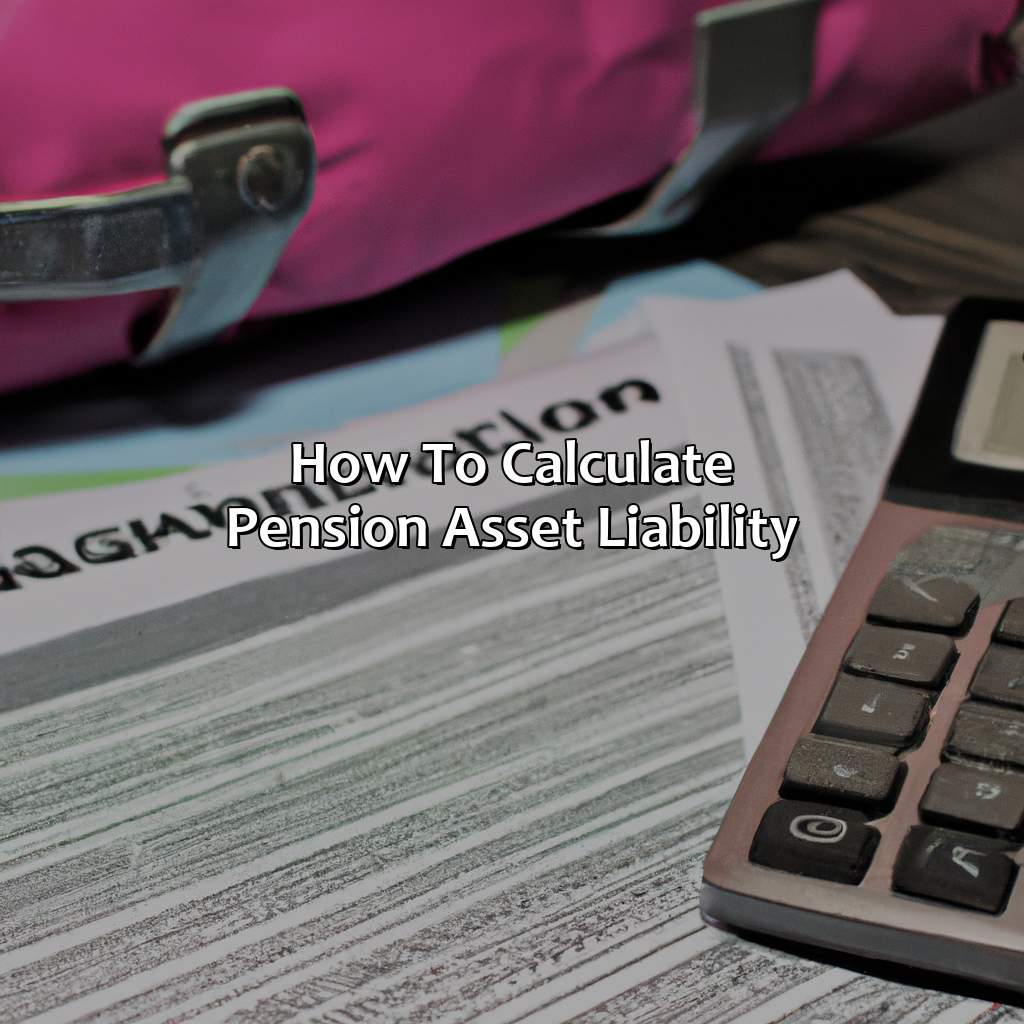How To Calculate Pension Asset Liability?
Key Takeaway:
- Understanding the factors affecting pension asset liability is crucial for accurate calculation. Life expectancy, inflation rate, and interest rate should be taken into consideration.
- Several methods can be used to calculate pension asset liability, including Projected Benefit Obligation (PBO), Accumulated Benefit Obligation (ABO), and Market Value of Assets. Each method has its own advantages and disadvantages.
- Accurately calculating pension asset liability is essential for proper planning and financial stability, as underestimating the liability can lead to financial difficulties and overestimating it can result in unnecessary contributions.
Do you need to improve your retirement savings? Calculating pension asset liability can help you to plan ahead for your financial future and give you peace of mind. By understanding pension asset liability, you can make better decisions to ensure a secure retirement.
Understanding Pension Asset Liability
Pension Asset Liability Calculation: A Comprehensive Guide
Pension asset liability calculation is a complex process that requires a thorough understanding of financial and actuarial principles. The calculation involves estimating what is known as the present value of a pension plan s future obligations and then comparing it against the value of the assets that the plan holds. This is done to assess whether the assets are sufficient to meet the liabilities. If you’re wondering how much of your pension your ex-wife can claim, it’s important to understand this process.
To value a pension, an actuary first determines the future benefits that a pension plan is obligated to pay. These benefits are often based on an employee s years of service, salary, and retirement age. Next, the actuary estimates the expected rate of return on the plan s assets. This is important because it affects the plan s ability to generate the necessary funds to meet its obligations. Finally, the actuary uses these estimates to calculate the present value of the plan s future obligations. If the present value of the liabilities exceeds the value of the assets, the plan is said to be underfunded.
How long after divorce can you claim pension? is also a frequently asked question.
It is important to note that pension asset liability calculation is not an exact science. There are many factors that can affect the estimated future obligations and expected return on assets, such as changes in interest rates, mortality rates, and economic conditions. As a result, pension fund managers and actuaries must regularly re-evaluate and adjust their estimates to ensure that the plan remains properly funded.
According to a report by the National Institute on Retirement Security, nearly 84% of Americans believe that the country is facing a retirement crisis. This further highlights the importance of accurately calculating pension asset liability to ensure that retirement benefits are adequately funded.
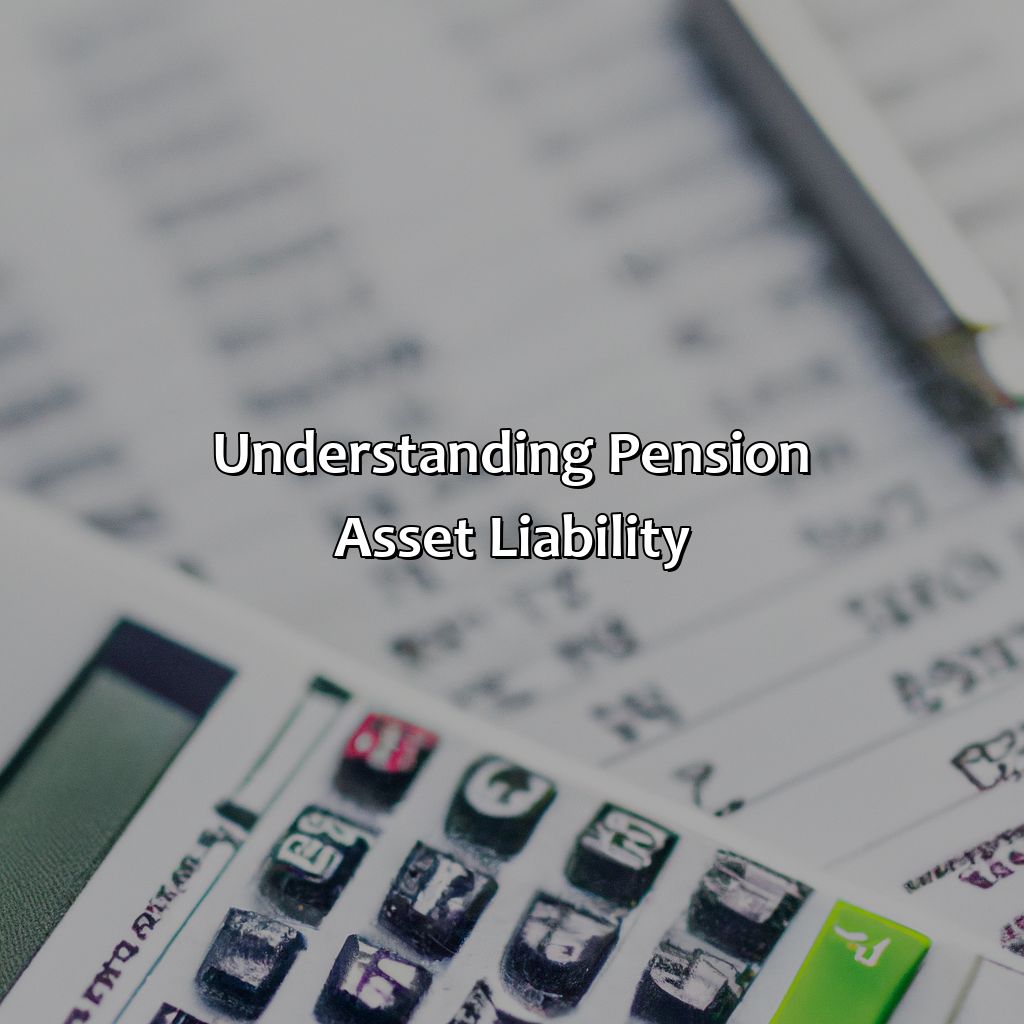
Image credits: retiregenz.com by Joel Duncun
Factors affecting Pension Asset Liability
Gain insights into financial strategies to maximize retirement savings! You need to investigate the details and nuances of each factor that affects your pension asset liability. Such factors include life expectancy, inflation rate, and interest rate.
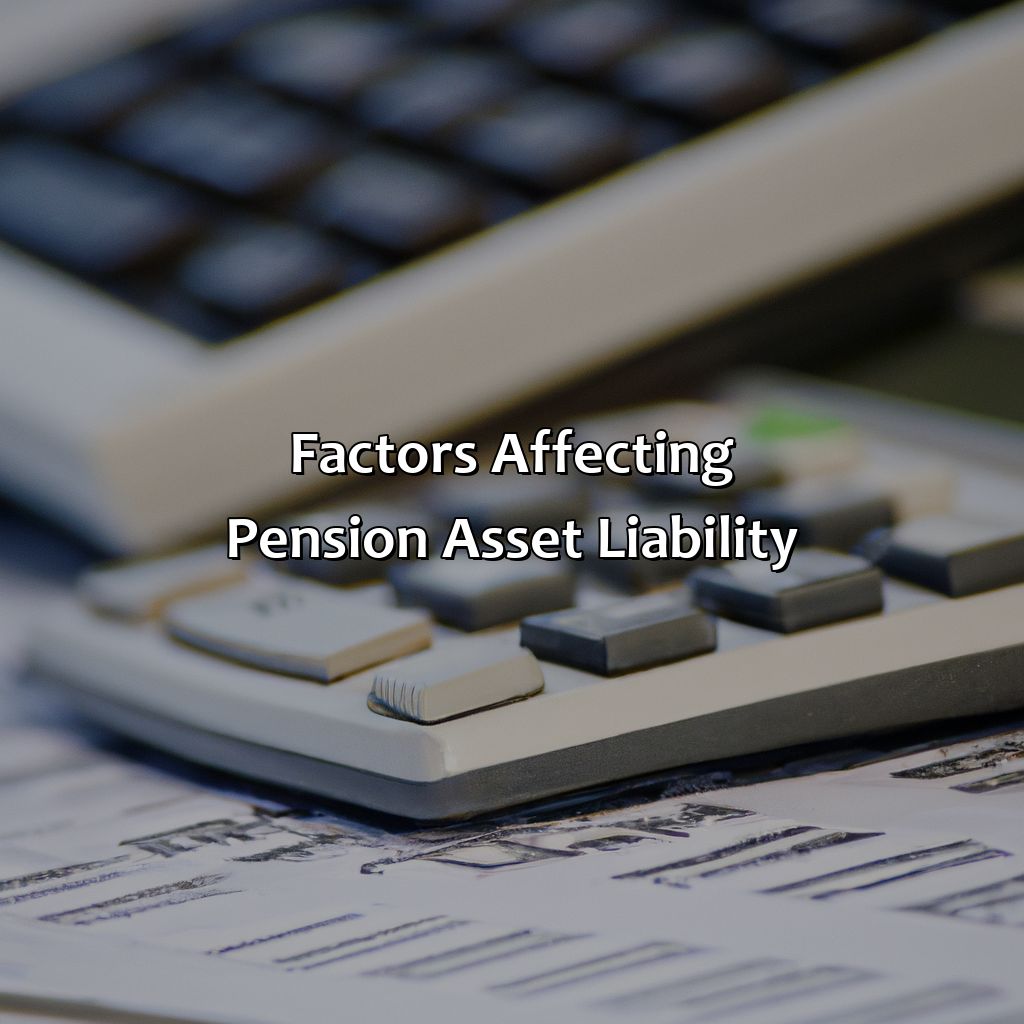
Image credits: retiregenz.com by Adam Washington
Life expectancy
As per actuarial science, the estimated years of survival for a person after reaching a certain age is known as life expectancy. It plays an essential role in calculating pension asset liability. The life expectancy of people varies based on their age, gender, location, lifestyle and other factors.
The value of pension asset liability is calculated using the formula – (pension obligation – plan assets). Here, the pension obligation is the sum of present values of future benefits owed to employees, while plan assets are the accumulated funds set aside to pay those benefits. Life expectancy is one of the critical factors that impact this calculation.
It’s crucial to consider broader trends in looking at life expectancy. For example, over time, there has been an upward trend in average life expectancy due to advancement in medical facilities and better lifestyle choices. An increase in life expectancy could have profound consequences for pension plans as it would mean more extended payment period for beneficiaries.
Mark Twain once said,” The report of my death was an exaggeration.” Similarly, In 2008, United Parcel Service (UPS) incorrectly estimated life expectancy leading to a massive reduction in their earnings by approximately $5 billion; which led them into financial trouble.
The only thing that inflates faster than my ego is the rate of inflation for pension asset liability.
Inflation rate
The impact of rising prices on pension asset liability is a critical factor. Inflation may significantly impact the ability of pension funds to pay pensions or claims. Additionally, it can affect the purchasing power of the pension income of individuals.
As inflation increases, the value of assets declines, which may lead to decreased returns on investments and less certainty in funding liabilities. A higher inflation rate leads to an increase in expected benefit payments, and therefore, it’s important to know how to calculate pension value for divorce because larger required contributions are needed to fund those benefits.
It is essential to consider inflation when calculating a pension plan’s asset liability because ignoring it may lead to significant losses for pensioners.
To prevent such losses, developing risk management strategies and around measurements that account for changes in inflation rates should become a crucial part of any pension fund planning process. Conducting regular stress tests can also be useful along with adequate asset allocation decisions between different assets’ classes based on expected scenarios like high-inflation scenarios so that risks can be mitigated before they turn into severe threats. Learn how to keep your pension in a divorce by consulting with financial experts.
Interest rates may be low, but calculating pension asset liability is still as stressful as a high school math test.
Interest rate
The impact of the cost of borrowing on the financial system can be discerned by exploring the effects of interest rates. The variation in interest rates often results in considerable fluctuations in pension asset liability. An increase in interest rate can lead to a fall in the price of a bond, which results in an increase in the pension asset liability.
A reduction in interest rates can have an opposite effect in which there will be a rise in bond prices, lessening pension asset liability. The higher the duration of a bond portfolio, the greater its sensitivity to changes in interest rates; hence, it is crucial for policymakers to recognize changes that could result from shifts such as yield curve shifts and re-pricing risk. If you’re wondering what is commuted value of pension, it can be calculated using specific formulas which take into account several variables such as interest rates, life expectancy, and the type of pension plan.
It is wise to note that several factors affect pension asset liability. Crucial aspects such as inflation risk and investment returns should also be taken into account when calculating pension liabilities and planning ahead for retirement. By considering these factors, pensioners or savers can avoid facing financial difficulties upon retirement.
Take control of your needs; plan intelligently by selecting a good investment portfolio that will offer you maximum benefits with minimum risks. Be vigilant about factors affecting pension asset-liability such as policy changes and economic events that might occur throughout your saving years. If you’re wondering what happens to pension when you divorce, it is important to seek legal advice from a qualified professional.
Calculating pension asset liability is like solving a Rubik’s cube, but instead of colors, it’s a complicated web of financial variables.
Methods of Calculating Pension Asset Liability
Explore the ‘Methods of Calculating Pension Asset Liability’ section for ease when calculating pension asset liability. This showcases three sub-sections:
- Projected Benefit Obligation (PBO)
- Accumulated Benefit Obligation (ABO)
- Market Value of Assets
See how each of these can provide a solution for calculating pension asset liability.
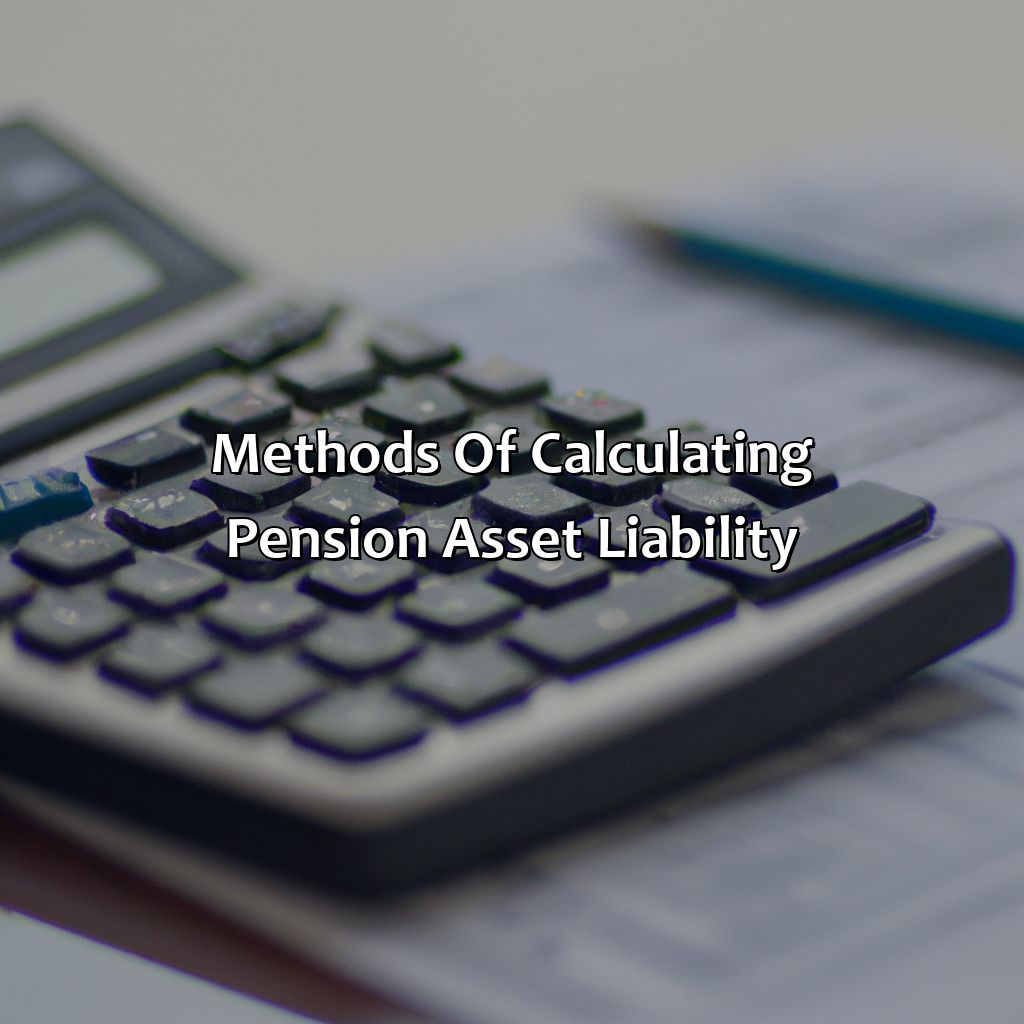
Image credits: retiregenz.com by Adam Jones
Projected Benefit Obligation (PBO)
Projected Benefit Obligation (PBO) is the estimation of liability that an employer has for providing future benefits to its employees regarding their pension plan. The PBO considers the estimated future salaries of employees, expected years of service, and assumed discount rates and is recorded as a liability on the employer’s balance sheet.
| Assumptions | Actual Results |
|---|---|
| Future Salaries | $50 million |
| Years of Service | 15 years |
| Discount Rate | 5% |
The above table shows the projection assumptions and actual results for calculating PBO. The estimated future salaries, expected years of service, and discount rate are used to calculate PBO; hence projections may differ from actual values.
Unique factors like retiree healthcare benefits also affect PBO apart from pensions. Retiree healthcare expenses cannot be excluded when projecting PBO based on company’s benefit plans.
Back in 2018, GE reported underestimating its projected benefit obligation by $15 billion due to miscalculations in its data model. Multiple major corporations have been found underfunding their pension plans in recent years revealing flawed calculations being made while considering such risk management practices as well as recent economic circumstances and fluctuations that need to be taken into account while estimating pension liabilities accurately.
Calculating ABO is like trying to solve a Rubik’s cube blindfolded, except there’s no guidebook on how to do it and the stakes are much higher.
Accumulated Benefit Obligation (ABO)
The ABO, a crucial pension liability calculation, is the actuarial present value of vested and non-vested benefits earned by employees based on salaries at retirement.
| Year | Discount Rate | Projected Benefit Obligation (PBO) | Service Cost | Interest on PBO | Amortization of Prior Service Costs | Total Annual Contribution |
|---|---|---|---|---|---|---|
| 2020 | 4% | $1,000,000 | $60,000 | $40,000 | $20,000 | $120,000 |
A comprehensive financial report is necessary to periodically reassess the ABO in line with changes in plan terms or employee demographics.
According to Reuters, “As of January this year, more than half of S&P 500 companies faced pension deficits.”
The market value of assets may change, but one thing that remains constant is the looming fear of pension asset liability calculations.
Market Value of Assets
Market value of the pension plan’s assets refers to the current worth of all investments held by the fund. This includes stocks, bonds, real estate, and other types of investments. Given below is a table that elaborates on various important aspects related to market value of assets.
| Types | Stocks, Bonds, Real Estate, Other Invested Assets | |
| Valuation Method | Fair Market Value | |
| Frequency | Daily |
It is important to note that market value can be highly volatile and change frequently based on numerous external factors that impact global financial markets.
Understanding how to calculate lump sum pension payouts requires analyzing historical trends and patterns. For instance, during economic downturns or recessions, the market values of many investments drop significantly as investors sell off their holdings in anticipation of future losses. Similarly, during periods when markets are performing well and there is optimistic investor sentiment, asset values may rise sharply.
The management of pensions has evolved over time since its inception in ancient Rome where military pensions were provided for retired soldiers. Since then, pension schemes have been transformed in many ways. Today’s complex pension plans involve detailed calculations using actuarial methods to determine expected asset returns, inflation rates and other economic variables.
Pension liabilities may not be exciting, but miscalculating them can leave you in retirement with nothing but a sense of humor.
Importance of Accurately Calculating Pension Asset Liability
Calculating pension asset liability is crucial for businesses that manage pension plans. Accurate calculations are necessary to ensure that the plan is adequately funded and meets all legal requirements. Without proper calculation, businesses may face significant financial risks. It is vital to stay updated on changes in regulations and asset values to stay on top of managing pension plans responsibly.
A company must accurately calculate the pension liability to avoid consequences of underfunding the plan. Inefficiently managing the pension plan can increase the liability, resulting in significant financial stress. Using strategies like an actuarial valuation can help to accurately estimate the pension asset liability and create a plan to meet the needs of the employees. Inadequate funding may lead to costly penalties, negatively impacting the company’s reputation.
Understanding the complexities of a pension plan’s financial landscape is imperative. Overlooking unique factors such as employee longevity, retirement age, and mortality rates can lead to underestimation or overestimation of liabilities. This can impact the company’s standing with regulatory authorities and hurt businesses in the long run. Accurate calculations of pension asset liability require a robust understanding of the regulations and accounting standards. For more information on where pension expense is on the income statement, visit our website.
Making sure your business is accurate in its pension asset liability calculations is a critical component of responsibly managing pension plans. Not paying attention can result in penalties, significant financial stress, hurt reputation, and legal complications that risk your entire business. By staying up-to-date on regulations and asset values, and using actuarial valuation strategies, your business can confidently stay on top of these complex financial matters. Stay informed and stay ahead.
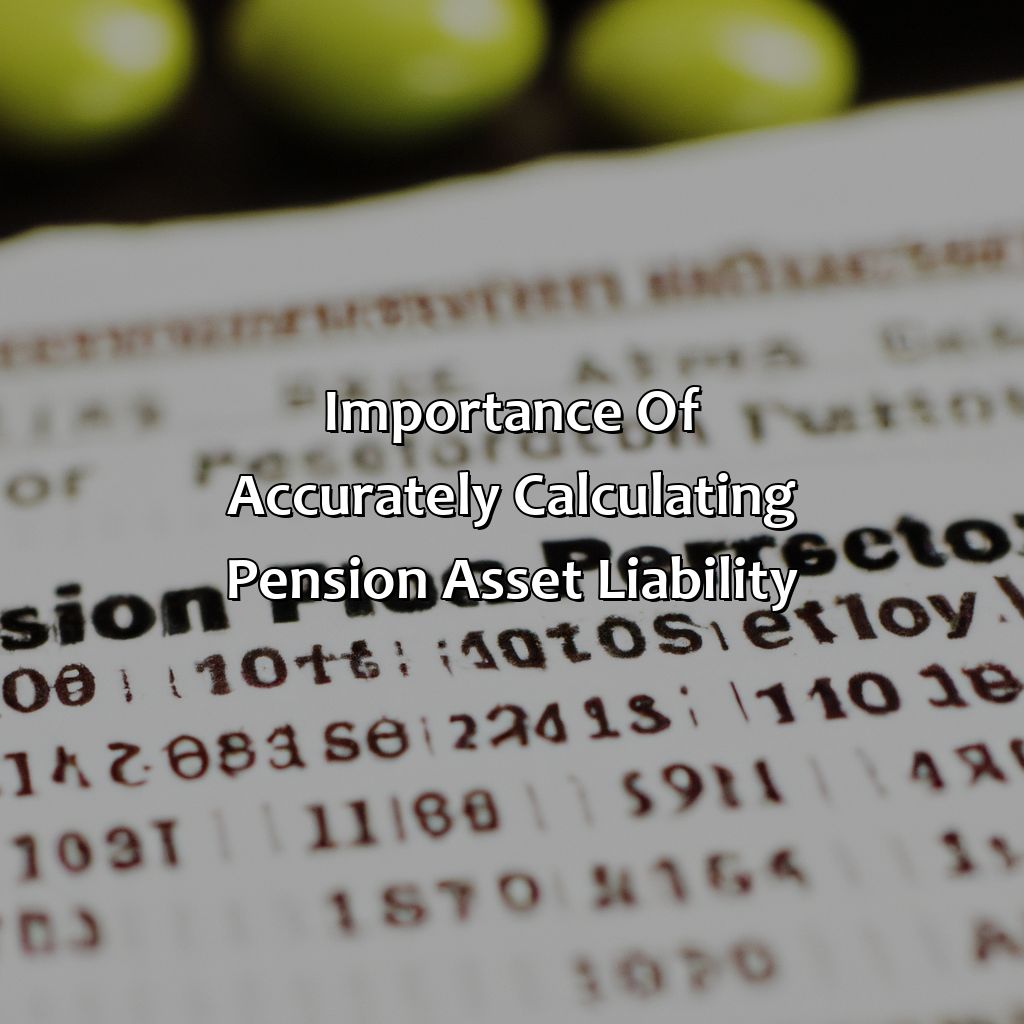
Image credits: retiregenz.com by James Duncun
Five Facts About How To Calculate Pension Asset Liability:
- ✅ Pension asset liability is the estimated amount of money needed to pay for future pension obligations. (Source: Investopedia)
- ✅ The calculation of pension asset liability takes into consideration factors such as the age of the pensioners, life expectancy, and expected investment returns. (Source: Pension Rights Center)
- ✅ The funding ratio, which is the ratio of pension assets to pension liabilities, is an important metric used to assess the financial health of a pension plan. (Source: Society of Actuaries)
- ✅ Actuaries, who are experts in risk assessment and probability, are typically responsible for calculating pension asset liability. (Source: The Balance)
- ✅ The calculation of pension asset liability can be complex and depends on mathematical models and economic assumptions. (Source: Pensions & Investments)
FAQs about How To Calculate Pension Asset Liability?
How do I calculate my pension asset liability?
Calculating your pension asset liability involves several steps. First, you need to know the current value of your pension fund assets. Then, you need to determine the expected future payouts to plan participants. Finally, you need to discount those payouts to their present value using a pension liability discount rate. The resulting liability should be compared to the value of assets in the pension fund to determine whether the plan is overfunded, underfunded, or fully funded.
What is a pension liability discount rate?
A pension liability discount rate is used to calculate the present value of future pension payouts. This rate reflects the expected return on investments that will be made with the assets currently held in the pension fund. In general, a higher discount rate will result in a lower pension liability, while a lower discount rate will result in a higher liability.
How do I determine the expected future payouts for my pension plan?
The expected future payouts for a pension plan will depend on a variety of factors, including the number of plan participants, their ages, their expected retirement dates, and the type of benefit they are entitled to receive. You will need to consult the plan documents and make calculations based on actuarial assumptions to determine the expected payouts.
What is an underfunded pension plan?
An underfunded pension plan is one in which the value of the plan’s assets is less than the expected future payouts to participants. This can happen when investment returns are lower than expected, or when the pension liability is higher than anticipated. When a plan is underfunded, the plan sponsor may be required to contribute additional funds to the plan, or benefits to participants may need to be reduced.
What is a fully funded pension plan?
A fully funded pension plan is one in which the value of the plan’s assets is equal to the expected future payouts to participants. A fully funded plan is generally considered to be financially healthy, as it has sufficient assets to meet all of its obligations to plan participants.
What is an overfunded pension plan?
An overfunded pension plan is one in which the value of the plan’s assets is greater than the expected future payouts to participants. This can happen when investment returns are higher than expected, or when the pension liability is lower than anticipated. When a plan is overfunded, the excess assets may be used to provide additional benefits to plan participants, or the plan sponsor may be able to reduce contributions to the plan.
